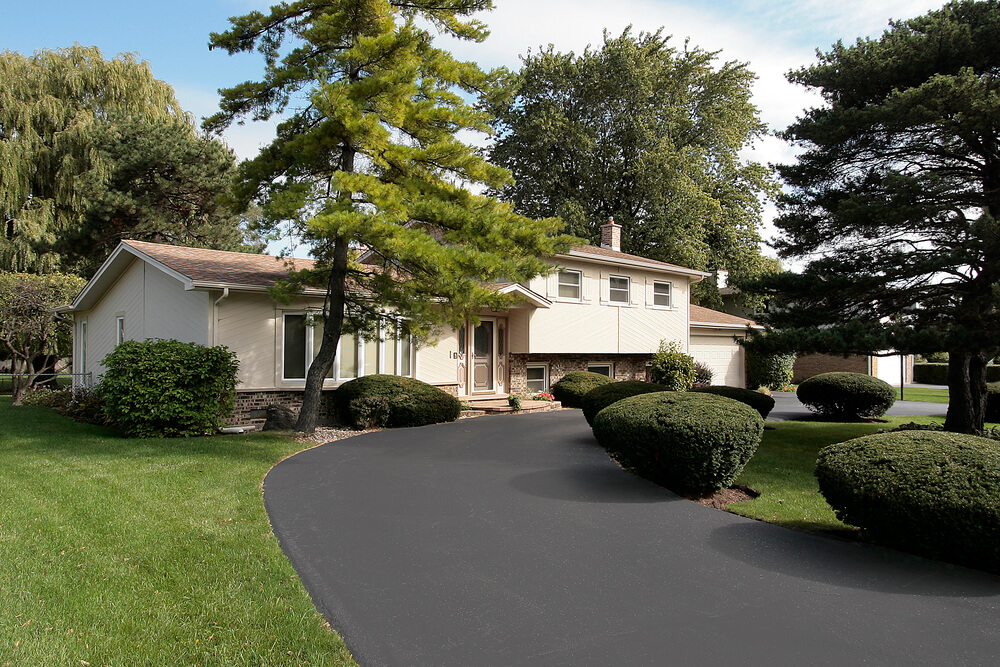
How Long After Sealcoating Your Driveway Can You Drive on It?
In order to get the most out of your driveway and to make it look good for years to come, many professionals recommended sealing it from time to time. Before we can get further into this process, let’s first take a step back and look at what sealcoating is and what it does for road surfaces.
What Is Sealcoating?
According to Midland Asphalt Paving, a paving contractor in Midland, TX, sealcoating is a process that helps protect driveways, parking lots, or roads from damage. This process creates a layer of coating over most asphalt-based pavements, giving it protection from the deleterious effects of ultraviolet radiation, oils, and water.
Sealcoating is often marketed as something that can extend the life of pavements. Indeed, this isn’t without evidence either, as sealing other materials like wood has been shown to increase its lifespan remarkably. That being said, no independent research has been done to prove this claim.
There are three main types of sealers: the refined tar-based model that is derived from coal, asphalt, and petroleum. While tar is probably the most used because of its remarkable hardiness, all three offer their own advantages.
There can be problems with sealcoating if you aren’t careful. Some types of coats, such as those based on asphalt, have been shown to be remarkably inferior to tar or petroleum-based ones. There are also some concerns that sealcoating can lead to run-off, causing unnecessary environmental pollution.
How Often Should My Driveway Be Sealed?
It is recommended for an individual to seal their driveway within a year after the pavement has been set, with every two to three years being done for renewal. Depending on the level of traffic, you might want to do it as much as annually.
In order to ensure the fastest and toughest set with your sealcoating, it is highly recommended to wait until the temperature drops to about 55 degrees. This temperature is considered ideal for the product to cure properly.
How Much Can I Expect to Pay to Seal a Typical Asphalt Driveway?
It can vary dramatically depending on your area of residence. Based on averages though, you can expect to pay approximately 40 cents a square foot for materials, with another 40 to 60 cents a square foot in labor costs if you go with a contractor.
A 5-gallon bucket of a low-quality sealant typically ranges anywhere from $6 to $9 and covers 400 square feet, while the creme-de-la-creme models will usually cost around $25 and cover 300 square feet.
What Do I Need to Seal My Driveway Myself?
If you are thinking about doing it yourself, you’re going to need all the tools necessary, not only for sealing but cleaning as well. In terms of tools, you’re going to need a paintbrush, broom (or leaf blower), paint scraper, pressure washer, and squeegee.
Spend some time either sweeping or blowing away all the debris that you can find, such as leaves, acorns, and twigs. If you have deep algae stains or moss, try using the pressure washer in conjunction with a good outdoor bleach cleaner. Remember to let it dry before sealing!
If your driveway has any necessary repairs, this is the best time to do them. For those cracks that are less than ½” in diameter, you can use a bottle of crack filler. For those larger than ½”, there is a driveway patch you can use. If you go this route, make sure to wait a month before sealing.
When working with the sealant, the edges should be done by hand with a paintbrush to get the cleanest lines. For the rest, try pouring the sealant directly onto the pavement and pushing it around with a squeegee. It should be held at a 45-degree angle and the sealant manipulated as evenly as possible.
You will need to protect the area from any traffic for at least 36 hours, with 48 hours being preferred. It is also recommended to develop some sort of system to keep leaves, twigs, and other debris away from the area, as this can damage the coating before it fully sets.
I Messed Up and Now It Looks Bad, What Do I Do?
Thankfully most driveway companies have come across this problem and have solutions. In addition, many of the tools and sealers that professionals use are of a higher caliber and are usually much more effective than store-bought items. They can be called in to correct any mistakes you may have made and ensure that the new sealcoating looks perfect.

